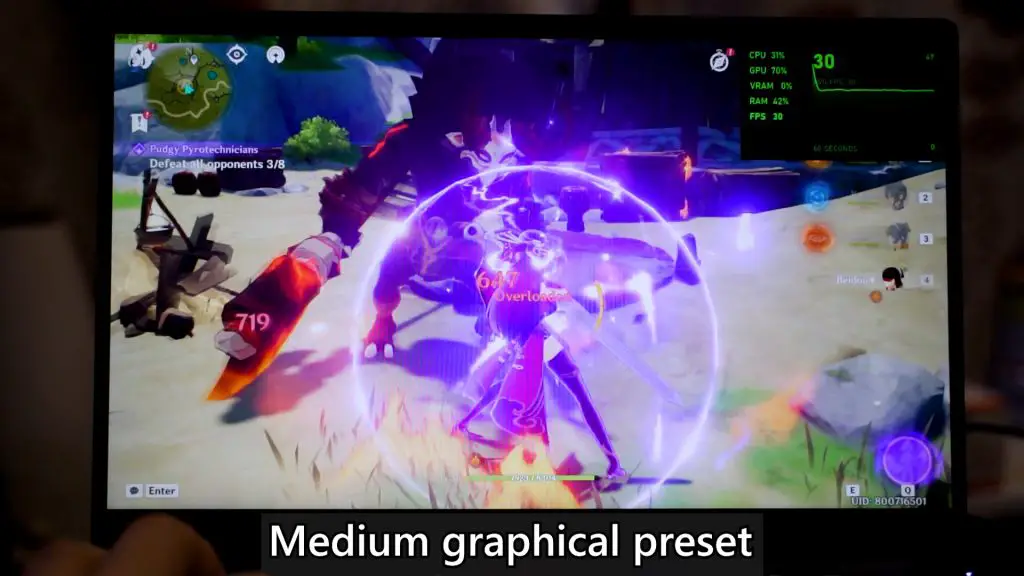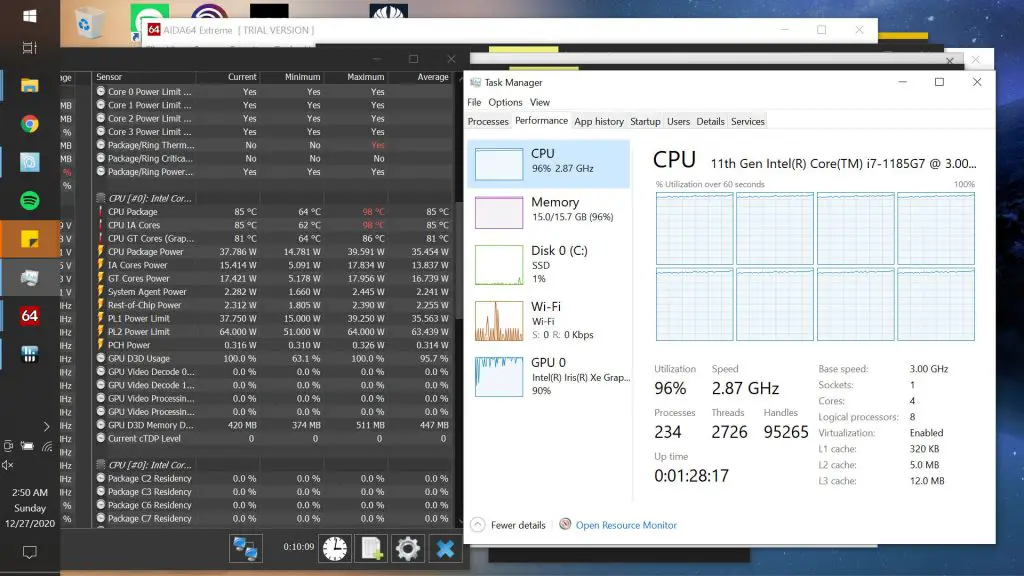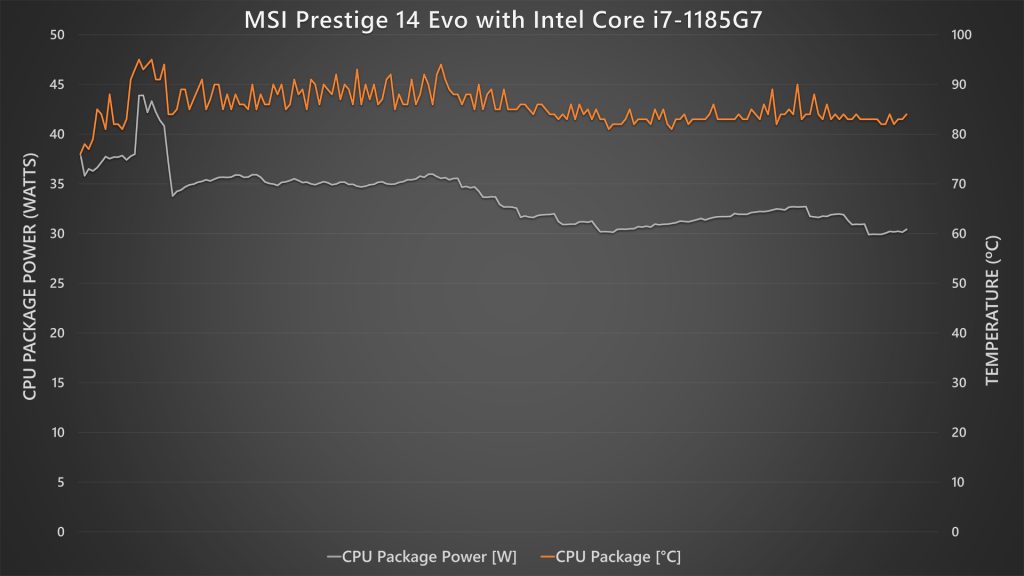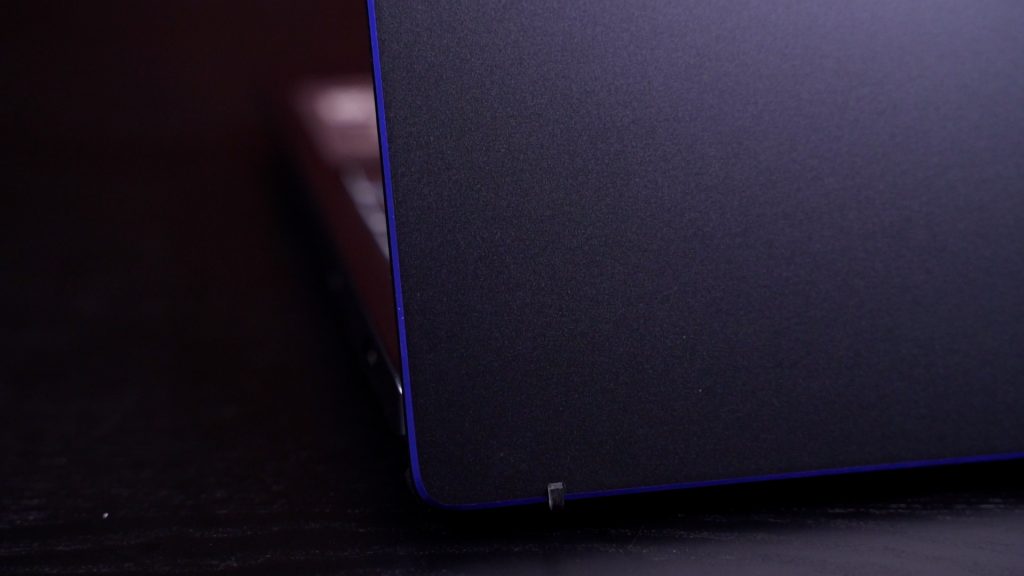Intel’s Tiger Lake series of chips – also known as the 11th Generation of Intel Core chips. If you’ve been following the Tiger Lake chips since its launch, you may have seen some videos featuring an Intel-branded laptop.
That laptop is considered the “reference” design for the Intel Core i7-1185G7 but we all know that it’s made by MSI because what we have here is the MSI Prestige 14 Evo – and it looks identical.
In terms of specs, it is also equipped with the Intel Core i7-1185G7 with the Intel Iris Xe graphics alongside 16GB RAM and also 512GB of NVMe SSD. Personally, I’m curious to test the Intel core i7-1185G7 since I’ve been testing the Intel Core i5-1135G7 and also the Core i7-1165G7. So, let’s take a look at the performance of this laptop right now.
Okay, so when I got the laptop – I thought the performance wouldn’t be that far off the Intel Core i7-1165G7 that we’ve tested before because both the Intel Core i7-1165G7 and the i7-1185G7 have the same operating wattage range of between 12W to 28W, so perhaps the Core i7-1185G7 is better binned because of silicon lottery.
And according to Intel’s ARK, that is exactly the case – the Core i7-1185G7 has slightly better core clocks on paper.
So I thought okay, since the specs don’t change much on paper, it shouldn’t have that much of a difference in its performance too.
And with that in mind, I tried running AIDA64 stress test on both CPU and GPU to see its utilizations and the wattage.
To my surprise, the MSI Prestige 14 Evo with its Intel Core i7-1185G7 manages to run both CPU and GPU at near 100% utilization and its CPU package power is at around 35W.
35W! That’s 7W above its rated maximum operating wattage. And yet, this result is repeatable across multiple different Windows and Intel driver updates too.
Then, we redid the same test over a course of a longer time to see what wattage it stabilizes at – and we found out it’s 33W. Still, it’s 5W above Intel’s limit.
In comparison, the ASUS VivoBook S15 S533EA with its Intel Core i7-1165G7, caps at 28W but manages to sustain about 85% CPU utilization and 100% GPU utilization in the same test.
But throughout our real-life gaming tests though, despite the Intel Core i7-1185G7 running at 35W, doesn’t yield that much of a difference. Sure, we get higher frame rates for CPU-bound games like Overwatch, but it still can’t run COD Modern Warfare.
Other games like Genshin Impact and Immortals Fenyx Rising performs as expected – so nothing out of the ordinary here.
But for this laptop, in particular, thanks to screen hinge that props it up and the excessive amount of holes, it can maintain a very low temperature during our synthetic stress test – which is fantastic.
And MSI does have the option to change to the high-performance power profile and the option to change to the maximum fan speed – whereby the fans get supremely loud but we also manage to squeeze out another extra 2W for its operating wattage.
So, all in all, I don’t know why this laptop can run beyond Intel’s maximum rated wattage of 28W, but its performance difference isn’t really that much compared to the 28W Intel Core i7-1165G7













